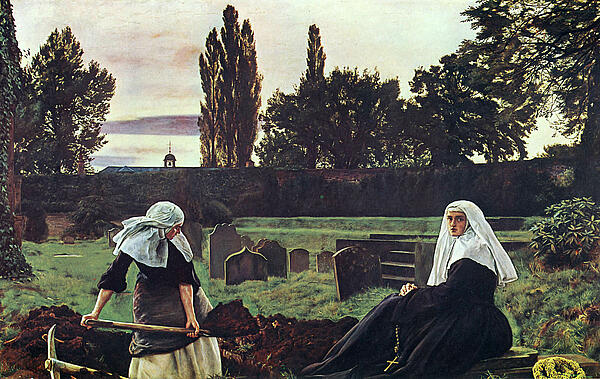A Day in the Life of a Medieval Nun
Why become a nun?
In Medieval England, a girl would usually become a nun for one of two reasons:
- Her family wished her to become a nun and she was not allowed to have a say in the matter. This was sometimes the only option for families who wished to have educated daughters but were unable to afford it.
- She genuinely wished to devote her life to God while living amongst like-minded women.
There were also some other less common reasons, such as those seeking a peaceful existence after being widowed or those who believed in the Cult of the Virgin. The Cult of the Virgin was the belief (founded by St Augustine) that everyone was born guilty of the origin sin. This was based on the idea that Eve had tempted Adam in the Garden of Eden, and was therefore guilty of the sinfulness of mankind and responsible for the death of Jesus Christ on the cross. This belief is thought to have contributed to the degradation and subservience that was inflicted upon women, as they were believed to be responsible.
However, there was also the view, propagated in the 12th and 13th Centuries, that the Virgin Mary was the Intercessor for the salvation of mankind, having given birth to Jesus. As a result of this, the attitude of men towards women because to improve slightly, particularly in the case of those who remained chaste, such as nuns.
What becoming a nun meant in Medieval England
Women who chose to become nuns were taking on a very serious, life-long commitment that would involve very hard work. This was particularly the case for poor women, who would often be expected to engage in manual labour, while wealthier women would be given tasks such as embroidery and spinning.
The reason there were such varied jobs in convents was due to the face that they were mainly self-supporting communities. Nuns had very little need to venture into the outside world, and everything from food to clothes was produced within the convent walls.
There were some convents that were quite wealthy themselves, and this is thought to have been a result of only accepting wealthy nuns. In cases such as this, the parents of the girl would often give the convent a dowry, and their jewellery would also be gifted to the convent.

The daily life of a nun in medieval England followed strict guidelines, just like that of the monks. Each day would revolve around chapel services where they would fulfil their promise to honour God with their life. Each individual convent would have created their own timetable, but it would likely have been similar to the timetable below:
02.00: Matins Laud, the first service of the day.
Once a nun had attended Matins Laud, she would return to bed and then rise again upon first light. Then she washed and had bread and beer for breakfast - drinking beer was much safer than water due to its boiling process.
07.00: Prime the second service of the day.
After Prime, nuns gathered together in the chapter house to hear Bible chapters or writings of saints.
09.00: Tierce, the third service of the day.
Nuns busied themselves with convent work after Tierce, which was similar to the work monks did such as working in the fields, kitchen, washroom or workshops.
12.00: Sext None, the fourth service of the day.
Dinner would follow Sext None and the nuns would eat in silence whilst one of them read from a book. They would then continue working once they had finished.
17.00: Vespers, the fifth service of the day.
After Vespers, the nuns would eat a light supper.
19.00: Compline, the last service of the day.
After Compline, the nuns would go straight to bed.
Although this is only a general guide, this routine would have been quite a common example of the daily life of a nun during this period. It reflects the promise of each girl to dedicate their life to God, which meant frequent prayer and giving up their right to marry or have children.
See also:
The Organisation within a Monastery
MLA Citation/Reference
"A Day in the Life of a Medieval Nun". HistoryLearning.com. 2026. Web.
